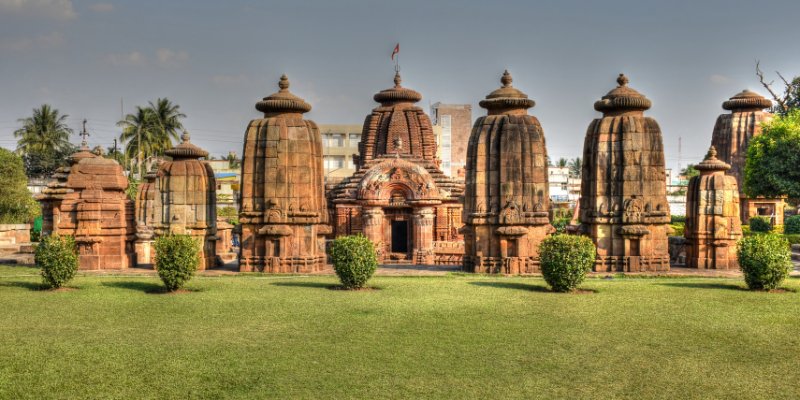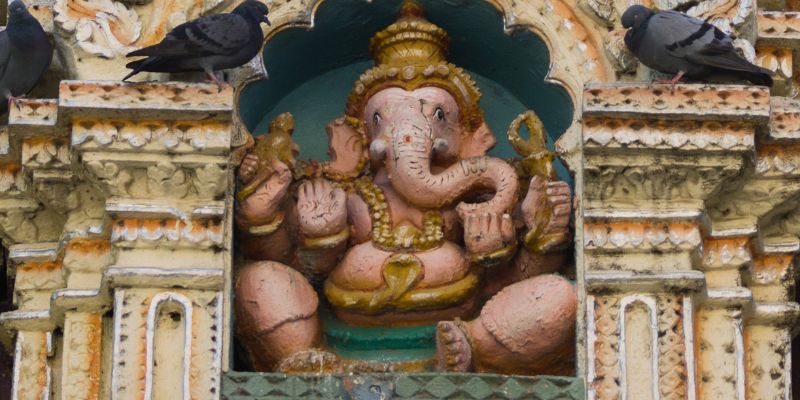Bhubaneswar, the capital of Odisha, has a rich cultural and historical legacy, with old temples symbolizing its importance. Traditional Bhubaneswar invites tourists to discover its architectural wonders and spiritual retreats. For a deep cultural experience, explore the ancient temples, which highlight excellent artistry and tell stories of ancient times.
Ancient temples from Bhubaneswar's Hindu pilgrimage have spiritual significance. These religious buildings are architectural marvels and help define the city's religious diversity. This post will explore Bhubaneswar's must-see ancient temples, historical relevance, and architectural beauty.

Lingaraj Temple:
The beautiful Lingaraj Temple symbolizes Bhubaneswar's Hindu roots. Since the 7th century, this Shiva temple has been a wonder of architecture. Kalinga architecture is seen in the Lingaraj Temple's high spire (shikhara), which has elaborate carvings and sculptures.
The Lingaraj Temple is sacred as well as beautiful. Pilgrims and devotees visit the temple for blessings and celebrations, particularly during Shivratri. The Lingaraj Temple is a historical landmark symbol of Bhubaneswar's religiosity.
Mukteshwar Temple is another architectural marvel. This Kalinga temple, with its elaborately carved arched doorways and unusual geometric and floral designs, is set in a tranquil area. The 10th-century Mukteshwar Temple attracts visitors with its beauty, Odissi music, and dance performances, contributing to Bhubaneswar's rich culture.
The ancient Bhubaneswar temples, notably Lingaraj and Mukteshwar, tell a story beyond their architecture. They invite tourists to explore the city's spiritual and cultural legacy, connecting them to Hinduism and past civilizations' creative grandeur. These architectural wonders are memorials to a city's rich history and unshakable dedication.
Mukteshwar Temple:
Bhubaneswar's architectural gem, the Mukteshwar Temple, is set in a tranquil setting. This 10th-century Kalinga temple is famous for its finely carved arched doorway (torana) and geometric and floral themes. The Lord Shiva temple blends art and spirituality.
The Mukteshwar Temple is a cultural hub for Odissi music and dance beyond its architecture. The temple's annual Mukteshwar Dance Festival draws international performers and fans, highlighting its cultural significance. Visitors are immersed in traditional music and elegant dancing within the old stone walls.
Visit Mukteshwar Temple to experience Bhubaneswar's rich culture and heritage. This voyage spans time, blending the temple's spirituality with art and music's energy. The Mukteshwar Temple showcases historical craftsmanship and cultural practices, encouraging tourists to experience the city's rich legacy.
Rajarani Temple:
Rajarani Temple, with its red and gold sandstone, is an architectural masterpiece that transcends time. The Kalinga dynasty's architecture is evident in this 11th-century temple. Visitors are captivated by the temple's intricate sculptures of deities, legendary animals, and daily situations.
Besides its beauty, the Rajarani Temple is a cultural and historical site of devotion. The temple is not devoted to a ruler or divinity, yet it exudes spiritual tranquility, making it a peaceful place to meditate in its magnificent surroundings. The lack of a god enables people to reflect on spirituality without religious allegiance.
The Rajarani Temple's mystique reflects the city's architectural variety and history. It's crimson and gold colors and elaborate carvings create a timeless atmosphere that invites tourists to experience Bhubaneswar's rich history and culture. The Rajarani Temple adds a spiritual dimension to the city's diverse legacy, whether recognized for its architectural delicacy or calm atmosphere.
Parasurameswara Temple:
Bhubaneswar's historic Parasurameswara Temple is a hidden treasure from the 7th century. This Shiva temple showcases early Orissan art and architecture. The temple's elaborate sculptures portray Hindu mythology, demonstrating the artists' skill.
Parasurameswara Temple is like a time doorway where ancient rites and prayers resound. The beautiful carvings and sculptures of the sanctum sanctorum recall the spiritual hunger that once filled its sacred halls. The exquisite carvings on the temple walls depict devotion, mythology, and old Bhubaneswar culture.
The Parasurameswara Temple is part of Bhubaneswar's temple circuit, revealing the city's spiritual and cultural richness beyond its history and architecture. Exploring the temple grounds, surrounded by centuries-old stone monuments, brings a connection to Hinduism and respect for timeless art. The Parasurameswara Temple quietly guards Bhubaneswar's heritage, encouraging interested individuals to explore its old enchantment.
Brahmeswara Temple:
Brahmeswara Temple, a symbol of Odisha's architectural grandeur, showcases the past's creative excellence. This 9th-century Shiva temple has elaborate carvings, beautiful sculptures, and a pyramidal construction. Many statues in the temple courtyard convey stories of dedication and creative achievement.
The Brahmeswara Temple attracts pilgrims seeking spiritual consolation in addition to its beauty. Festivals elevate the temple's purity with devotion and cultural activities. Visiting the Brahmeswara Temple is a deep dive into Odisha's creative and spiritual legacy and Bhubaneswar's cultural origins.

Tips for Visitors:
Timing is crucial when seeing Bhubaneswar's ancient temples. Temple festivals are the finest time to attend since they are complete with ceremonies and festivities. The temples' spiritual force and cultural importance are vital on these auspicious dates. Watching traditional rites and seeing devotees' fervor helps explain temples' importance in local religion.
Visiting these hallowed locations requires cultural awareness and etiquette. Removing shoes before entering the temple shows reverence for the sacred sanctuary. Visitors are asked to follow cultural traditions, balancing inquiry and respect.
Buses and taxis make Bhubaneswar's cultural attractions easy to reach. A well-connected transportation network makes these ancient temples widely accessible, enabling history, spirituality, and architectural enthusiasts to explore them. Bhubaneswar's historic temples provide cultural richness and profound experiences, from Lingaraj Temple's storied halls to Rajarani Temple's beautiful sculptures.
Conclusion:
In conclusion, Bhubaneswar's ancient temples are more than simply architectural marvels; they are windows to an ancient past, cultural treasures, and spiritual places of discovery. Lingaraj, Mukteshwar, Rajarani, Parasurameswara, and Brahmeswara temples tell the city's history, art, and spirituality tale. Visitors see Kalinga architecture and join a vibrant culture of ceremonies and festivities as they tour these temples. Bhubaneswar's temples combine history and culture.
This cultural journey requires knowing when to visit, respecting local traditions, and navigating the city. You'll feel a deep connection to Bhubaneswar's culture as you enter these old temples. The must-see ancient temples in Bhubaneswar invite visitors to explore the city's past and appreciate its timeless beauty and spiritual significance.




